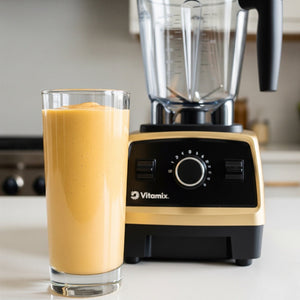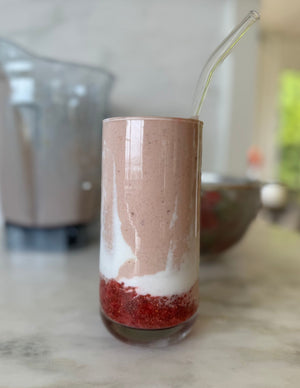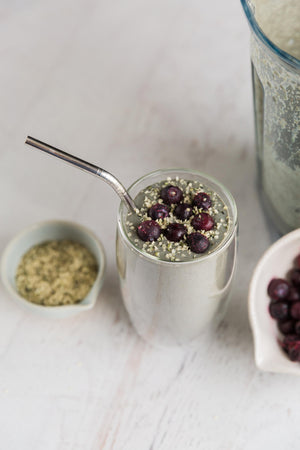Whether it’s your first pregnancy or your fourth, you might be wondering if there’s a better way to prepare for and come out of a Glucose Tolerance Test.
Most women agree it’s not their favorite part of pregnancy, and it definitely doesn’t leave them feeling well! After three of my own pregnancies and supporting so many women in theirs, I’ve come up with a tried-and-true method for making this test feel a little more tolerable. And – surprise! – my solution has everything to do with blood sugar balance. Specifically, using the Fab 4 method to balance blood sugar both before and after the test will help you feel better, stabler and back to your normal self quicker!
Before diving into all things Glucose Tolerance Test, I want to touch on why this test is administered in the first place. As it is the current method doctors employ to screen for Gestational Diabetes, the implications are important.
The Importance of Gestational Diabetes Screening:
According to the CDC, between 2% and 10% of pregnancies are affected by Gestational Diabetes. That’s a pretty high percentage! But while it’s relatively common, that doesn’t mean it shouldn’t be taken seriously.
Gestational Diabetes can put mom at risk for things like preeclampsia and a future diabetes diagnosis. And it can put babies at risk for preterm delivery, excessive birth weight, breathing difficulties and even future obesity in life. All that to say, it’s important to know whether or not this is a condition affecting your pregnancy.
What is a Glucose Tolerance Test?
A Glucose Tolerance Test is a routine test performed between 24 and 28 weeks gestation to screen for Gestational Diabetes. This test does not diagnose Gestational Diabetes. Its function is to indicate whether or not further testing for GD needs to be done. If the initial one hour test shows a glucose response above normal limits, a three-hour test will likely be the next step in determining whether or not Gestational Diabetes is present.
Currently, the beverage consumed for the Glucose Tolerance Test contains 50 g of glucose. And the threshold for normal blood sugar levels 1 hour after drinking the solution is anything under 135 or 140 mg/dL, depending on your doctor.
Current Guidelines for Undergoing the Glucose Tolerance Test:
- No eating or drinking 2 hours before the test, including water.
- The glucose beverage may be refrigerated but may not be consumed over ice. This could water down the solution and produce unreliable results.
- The glucose beverage must be consumed entirely within the span of 5 minutes. And it must be consumed 30 minutes prior to your appointment time.
- The blood draw for glucose testing should be done exactly one hour after the glucose beverage was consumed. (This typically requires that when you arrive, you must let the lab’s front office know exactly when you finished your drink.)
- No eating or drinking until after your blood is drawn.
Best Way to Prepare for & Come out of a Glucose Tolerance Test
How well you tolerate the test and how you feel the rest of the day after the test will largely depend on your eating and activity leading up to and after testing.
I was glad to see the guidelines for the Glucose Tolerance Test updated so that you no longer have to take the test after fasting overnight. Consuming 50 g of glucose on an empty stomach is enough to create an unfair and jarring spike and crash in blood sugar for anyone. And a really difficult rest of the day – headaches, fatigue, cravings, shakiness, anxiety or just blah! With the updated guidelines, it offers more margin for a healthier preparation prior to the test.
My approach to managing the test? It’s simple. I want to really balance your blood sugar via activity and diet going into the test. And I want to help you pull your blood sugar back into balance as quickly as possible after drinking the glucose solution. Let’s go into the test as insulin sensitive, rested, and stable as possible. Here are my simple but powerful prep points.
Best practices PREPARING FOR a Glucose Tolerance Test:
- Get a good night of sleep before your test to ensure best insulin sensitivity. Sleep deprivation is negatively associated with insulin sensitivity. As you prepare to consume a solution containing a whopping 50 g of glucose, this is definitely the time you want your muscles to be as ready as possible to soak up all the glucose they can. Turn off screens at least an hour before bed the night prior to your Glucose Tolerance Test. Try to spend a little time with your eyes exposed to the sunset and consider a magnesium supplement. Go to bed early. Do what you can to optimize your sleep. Mind Body Green makes a fantastic sleep support supplement that you can get at a discount using my code KELLY10. As always, discuss any supplementation with your provider first.
- For the new guidelines, which require only 2 hours of fasting prior to the test, I recommend a blood draw time around 10 or 11am. This allows you to have breakfast and drink plenty of water upon waking before you begin your fast at 8 or 9am.
- Consume a protein-rich, Fab 4 style breakfast. I want you to consume a minimum of 20 g of protein at breakfast. Research suggests protein rich consumption prior to a high carbohydrate meal results in better post-meal blood glucose levels. This means you can help blunt the blood sugar spike (and all of the unwanted symptoms that go with it) of your Glucose Tolerance Test simply by eating a high protein breakfast beforehand. Fab 4 smoothies with my protein powder, which contains 20-30 g of protein per serving, are a great way to do that. Alternatively, you can do an egg scramble with avocado and veggies, or cottage cheese with tomatoes and a drizzle of olive oil + sea salt. I have a ton of Fab 4 smoothie recipes on my website, so you’ll be sure to find one that satisfies your craving. On the particular testing morning, I would consider going with a fruit free smoothie to really solidify that blood sugar balance. Some great options are:
- Chocolate Almond Butter Crunch
- Peanut Butter Cacao Nib
- Green Ginger (which would also be awesome for those who struggle with nausea!)
- Very Vanilla Smoothie (using the cauliflower rice option)
- If it’s part of your routine, I encourage a light workout or walk. Exercising before a meal can have positive effects on insulin sensitivity.
- Hydration is also important. Think of dropping a teaspoon of sugar into 8 oz of water versus dropping a teaspoon of sugar into 16 oz of water. Common sense tells us the smaller the volume of water, the more concentrated the sugar. It’s the same with our blood! You want to be hydrated to the point that your blood volume is optimal, which will automatically lower the concentration of your blood sugar. But how do you properly hydrate? With electrolytes! I’m a believer, consumer and investor in LMNT electrolytes. I couldn’t more highly suggest consuming a packet of LMNT with a huge glass of water in the morning just prior to your Glucose Tolerance Test fasting period.
What NOT to consume in excess the morning of your test:
- Caffeine: Too much caffeine can have a diuretic effect. This will ultimately lend toward dehydration and lower blood volume.
- Sugar: The last thing you want to consume is sugar (even if it’s in “electrolyte powder” form!) when trying to balance your blood sugar before a known significant glucose intake. Balanced blood sugar status prior to your Glucose Tolerance Test is absolutely key.
I use a CGM, or continuous glucose monitor, with my clients so they can start to learn how specific foods affect their blood sugar, how pairing foods can support energy levels, and how poor sleep decreases insulin sensitivity and makes most of us crave sugar and jump on a blood sugar roller coaster. Levels CGM has simplified and accelerated how my clients can track their glucose and make immediate changes from the results. If you're looking for more support on understanding your blood sugar before going into a Glucose Tolerance Test, for a limited time, you can join Levels and receive an additional 2 free months on your annual membership when you sign up with my link, levels.link/KELLY.
Best practices COMING OUT OF a Glucose Tolerance Test:
You’ll see the concepts are largely the same between going into your Glucose Tolerance Test and coming out of it. This is because the goal is the same: blood sugar regulation. And my Fab 4 philosophy plus a few lifestyle additions such as light exercise are the tried-and-true path to optimize blood sugar regulation.
I know you might be feeling crummy and really craving a carb-heavy hit after your test, but stick with me for a few simple steps. You’ll be calm, stable and back into balance shortly if you do. It’s so important to get off the spike and crash roller coaster if you want to feel your best and be your healthiest (not to mention, it’s healthiest for baby, too!):
- Keep a protein or fat in your purse or car for immediately after the test. Easy options are beef jerky or mixed nuts. No matter how well you prepare, it’s likely that you’ll end up feeling shaky or have a headache after drinking the solution. A quick hit of slow-digesting food will help blunt the spike and symptoms.
- Roll right into an animal rich protein Fab 4 meal after your test. It’s crucial that your first meal after the test hits the Fab 4: protein, fat, fiber and greens. This is what will ultimately curb your cravings, calm your mind, dampen the blood sugar spike and exit you right off the roller coaster. The Fab 4 meals mentioned above for breakfast would all make great options. You can even pack a Fab 4 smoothie in a Hydroflask to keep you in your car for after the test! I have a ton of other recipes on my website which would be perfect for a post-Glucose Tolerance Test meal. Some of my slow cooker Fab 4 faves that you can add to lettuce cups or pair with cauliflower rice for a hearty bowl are:
- I highly suggest you prep the food before your test. When you’re hungry and fighting cravings, you won’t want to take the time to prepare something healthy and stabilizing. This is a great time for a crock pot meal - it’ll be ready and waiting as soon as you walk in the door after your test!
- Go for a walk or do some other light activity. Post-meal glucose levels can be lowered simply by going for a brisk walk. After you curb your craving with protein, fat, and fiber, get outside in fresh air. If possible, go for a brisk walk. This will be good for both mind and body.
The Fab 4 is a powerful tool I want you to have in this season of pregnancy, but also beyond. It will help you feel better on tough days, like when nausea hits or Glucose Tolerance Tests must be done. But it’ll also help you optimize energy and grow your sweet babe the healthiest way possible.
Want more resources for a growing baby + glowing mom? I’m here for it!
- Fab 4 Pregnancy: The holy grail pregnancy course where I break down optimal preconception + pregnancy nutrition in a comprehensive but approachable way. No more time wondering what to eat when it’s more crucial than ever. And bonus, I spill all of my pregnancy favorites – supplements, products, non-toxic nursery and more…
- Be Well Protein Powder: Chemical-free protein powder with just 1-3 ingredients. The cleanest protein powder for pregnancy and beyond, with each serving containing an optimal 20-30 g of protein.
- The Be Well Podcast: Managing Your Diet During Pregnancy with Lily Nichols, RDN
- The Be Well Podcast: How to Feed Your Fertility and Cultivate a Healthy Pregnancy with Lara Erlich
- The Be Well Podcast: It Takes Two: Reinventing Prenatal Supplements with WeNatal
- Max Lugavere The Genius Life Podcast: What to Eat When You’re Pregnant or Nursing with Kelly Leveque
- Dirty Genes Podcast: DGP: Empowering Your Health and Pregnancy with Kelly LeVeque
- Article: Electrolytes and Pregnancy
- Article: Be Well Tips for Your First Trimester








